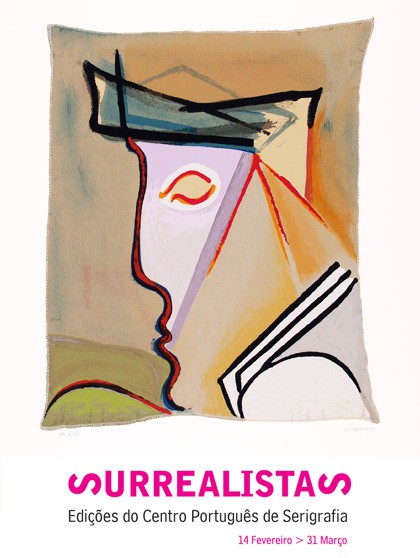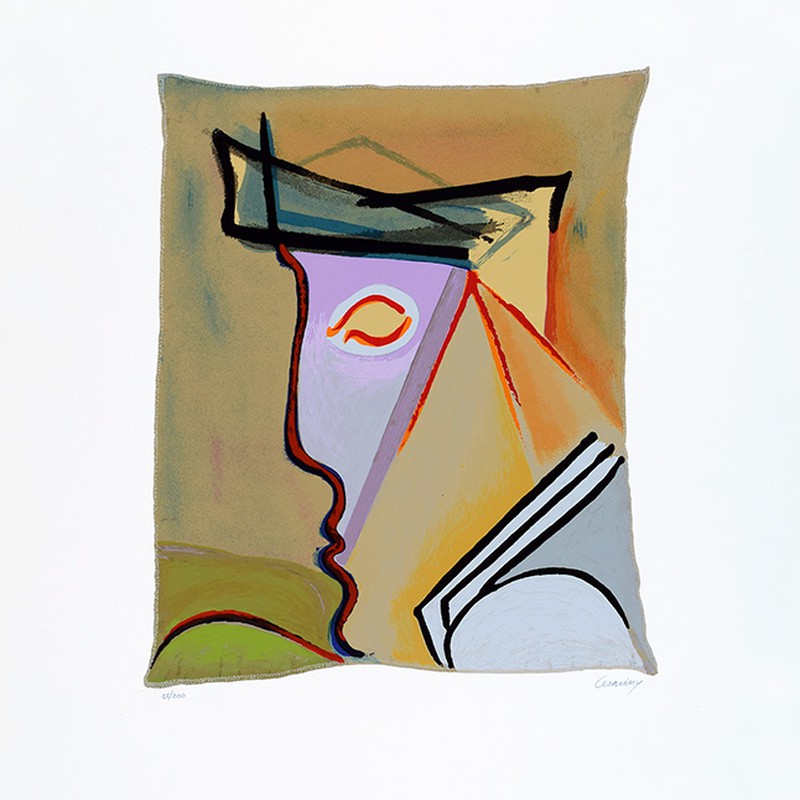
The Surrealists
From Saturday, February 14th and until February 14th. March 29th will be open. on display in the installations of the Portuguese Screen Printing Center at the Centro Cultural de Belém (Store no. 7), an exhibition of graphic work, engraving and screen printing, by surviving artists of Surrealism in Portugal: Lud, Carlos Calvet, Raúl Perez, Mário Cesariny, Artur Cruzeiro Seixas and Eurico Gonçalves, entitled SURREALISTAS – Editions of the Portuguese Screen Printing Center.
Surrealism, a movement created by André Breton in 1924 (year of publication of the Surrealist Manifesto), abroad and in Portugal, invested in the connection between artistic creation and the unconscious and had great expression in literature and plastic arts. The poet and painter António Pedro was among us one of the precursors of this movement, which he came into contact with in Paris, where he lived, in 1935. His surrealist painting was exhibited for the first time in 1936 at the Sociedade Nacional de Belas Artes in Lisbon .
The exhibition in 1940 of Pedro with António Dacosta and the English sculptor Pamela Boden became a fundamental milestone in the affirmation of this striking trend in the Portuguese imagination of the period 20th century until then turned on and according to José Augusto França "to modernized naturalistic values". The relationship with the French environment and with André Breton intensified with the departure of António Dacosta and Cândido da Costa Pinto to Paris where the latter participated in the great exhibition of 1947, the year in which the Lisbon Surrealist Group was formed. It included painters, poets and painter-poets: António Pedro, Fernando de Azevedo, Vespeira, Alexandre O'Neill, António Domingues, José-Augusto França, Mário Cesariny, Moniz Pereira and Antó nio Dacosta. The group performed for the first time in 1949 at a single Surrealist Exhibition, where a famous "cadavre exquis" stood out, having disbanded shortly afterwards. Mário Cesariny then formed another group with Cruzeiro Seixas and Mário Henrique de Leiria, among others, holding two exhibitions in this context in 1949 and 1950.
Surrealism, which later became embroiled in internal and external quarrels and controversies, such as the one that opposed it to the group of neo-realists, interested numerous then young artists: Fernando Lemos, Carlos Calvet, Jorge Vieira, D 'Assumption, Eurico Gonçalves and Areal and later, in expressions that derived from him, René Bertholo, Paula Rego, Lurdes Castro and Noronha da Costa, among many others. The surrealist aesthetic remained in Portugal and even Today, a presence that has continued precisely in works such as those by Lud, Carlos Calvet, Raúl Perez, Mário Cesariny and Artur Cruzeiro Seixas that we can currently appreciate in a thematic exhibition at the Centro Portuguê ;s of Screen Printing.
